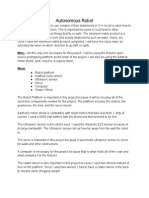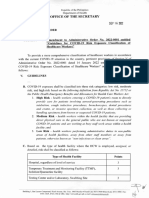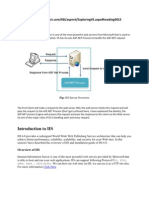0% found this document useful (0 votes)
7 views4 pagesRailway Track Crack Detection Robot
Uploaded by
tamilnarun17102000Copyright
© © All Rights Reserved
We take content rights seriously. If you suspect this is your content, claim it here.
Available Formats
Download as DOC, PDF, TXT or read online on Scribd
0% found this document useful (0 votes)
7 views4 pagesRailway Track Crack Detection Robot
Uploaded by
tamilnarun17102000Copyright
© © All Rights Reserved
We take content rights seriously. If you suspect this is your content, claim it here.
Available Formats
Download as DOC, PDF, TXT or read online on Scribd
/ 4






















































































